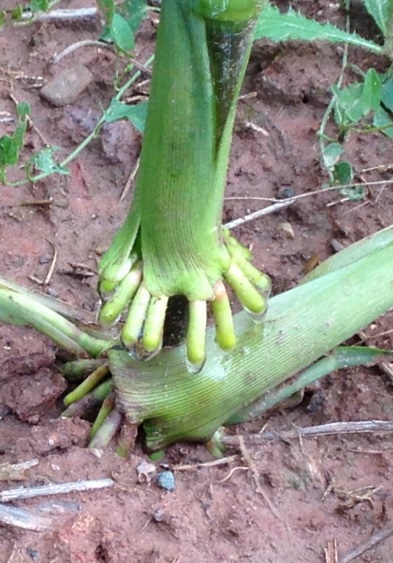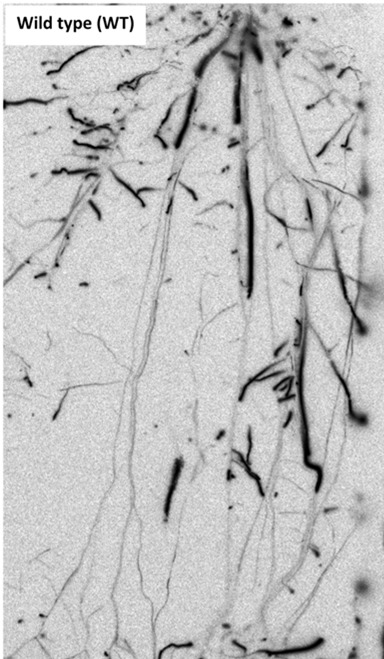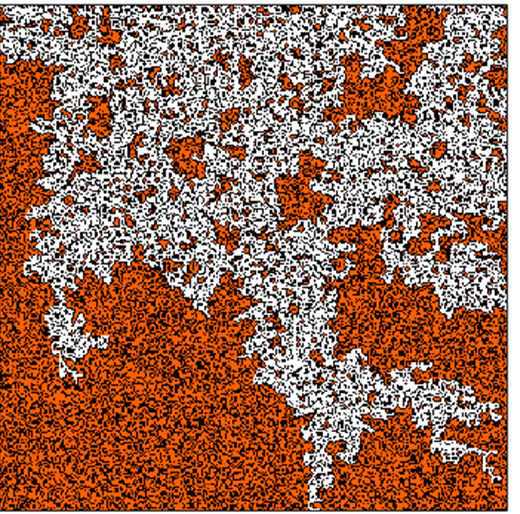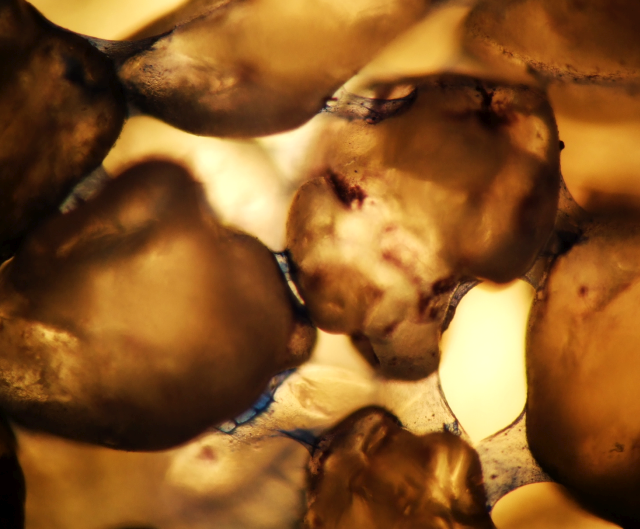Research Projects - Overview
(this website will not be translated)
Soil drying and salinity stresses in crops under drip irrigation: effect of root and rhizosphere hydraulic properties on leaf water potential
A joint project between the Chair of Soil Physics, University of Bayreuth, Germany and the Hebrew University of Jerusalem, Robert H. Smith Faculty of Agriculture, Food and Environment, Israel.
Rational: Root water uptake (RWU) accounts for ~80% of the total terrestrial evapotranspiration, affecting crop growth and yield, hydrological processes, carbon cycle and more. Despite the importance of this process, relatively little is known about the interactions between the soil and the plant and the impact of this interaction on RWU, especially under water drought and saline conditions. Objectives: The objectives of the proposed research are to identify in what conditions RWU becomes limiting, how root and rhizosphere properties affect crop tolerance to drying and salinity stresses, which root and rhizosphere traits allow reducing abiotic stresses, and which irrigation management can result in optimal stress tolerances in tomatoes.
Methods: To reach these objectives, we design an innovative experiment that includes simultaneous measurements of water potential in the plant and the soil at both the laboratory and field scale. In addition, we also develop physically based models that allow the interpretation of the experimental results and testing scenarios.
Applications: A decision support system that will integrate the results of the study and will recommend optimal irrigation management will be developed. The experimental findings can be used as a platform to design breeding of root systems for optimal drought tolerances.
Project members:
Dr. Gachao Cai1
Mohanned Abdalla1, PhD candidate
Prof. Dr. Carminati1, PI
Prof. Dr. Nimrod Schwartz2, PI
1Soil Physics, University of Bayreuth
2Hebrew University of Jerusalem, Robert H. Smith Faculty of Agriculture, Food and Environment
This project is part of the German-Israeli Water Technology Cooperation Program funded by the Federal Ministry of Education and Research (BMBF).
MUCILAGE: The hydraulic bridge between soil and plants (DFG CA921/2-1) [2013-2017]
The aim of the project is to characterize the physical and chemical properties of root exuded mucilage and its effects on water flow in soils and root water uptake. This project is a collaboration with the University of Landau (Prof. Gabriele Schaumann) and UFZ-Halle (Prof. Doris Vetterlein).

Mucilage (clear visible fluid at root tips) exuded by the crown roots of field-grown maize.
Member of the project: Dr. Mutez Ali Ahmed and Jun.-Prof. Dr. Eva Kroener (now at Uni-Landau).
Root exudation and the biophysics of the rizosphere (DFG CA921/3-1) [2015-2018]
Root exudates help to improve nutrient uptake and microbial activity. This project aims to understand the soil and root properties affecting the spatial and temporal distribution of root exudates. Novel imaging methods (neutron radiography, 14C imaging, zymography) and numerical models are used to visualize and interpret profiles of root exudates as a function of distance from the root surface. This project is in collaboration with Prof. Y. Kuzyakov (Uni-Göttingen).

14C imaging of root exudates (Barley); courtesy of Maire Holz.
Member of the project: Maire Holz (PhD student).
A pore network model of soil hydrophobicity: Model implementation and experimental validation (DFG CA921/4-1) [2017-2020]
The objective of the project is to improve our understanding of the physical mechanisms that cause some soils to turn water repellent. Our hypothesis is that the microscopic heterogeneity of hydrophobic compounds explains why at given water contents and soil organic matter a soil turns suddenly from hydrophilic to water repellent. Such criticality can be explained using a percolation approach.

Pore network model of water percolation through a water repellent soils close to the percolation threshold.
This project is in collaboration with Prof. Jörg Bachmann (Uni-Hannover).
Member of the project: Pascal Benard (PhD student).
Sustainable intensification of agriculture through agroforestry SIGNAL (Part of the BONARES project – BMBF) [2015-2021]
Agroforestry offers unique and diverse possibilities to optimize water resources available for plants. Trees reduce the exposure to wind and the transpiration demand of crops, resulting in slower water losses which can be beneficial during summer drought spells. Deep roots of trees can bring additional water to the top soil via HL, providing a safety reservoir of water for shallow-rooted crops. Our objective is to quantitatively understand the aboveground and belowground factors controlling soil water distribution and transpiration rate in trees and crops and then to design optimal tree-line distances. The first phase of the SIGNAL Project startet in July 2015 and will end in June 2018, the second phase will start in July 2018 and will end in June 2021. Website of the project.
Member of the project: R. Gerjets (PhD student at Uni-Göttingen)
Rhizosphere wettability and implications for water availability to plants (VW ZN 3152) [2016-2020]
This study deals with water flow through the rhizosphere during repeated drying and wetting scenarios, simulating the impact of drought events and irrigation. We focus on the effects of mucilage on water repellency in the rhizosphere. Our aim is to quantitatively predict the occurrence of water repellency in this region. Two modelling approaches will be combined to simulate the rhizosphere water dynamics. This project is realized in cooperation with Prof. Dr. Rony Wallach (Hebrew University of Jerusalem).

Dry, hydrophobic mucilage deposits in coarse sand; courtesy of Pascal Benard
Project Managers: Prof. Dr. Andrea Carminati, Prof. Dr. Rony Wallach
Coworkers: Pascal Benard (PhD student), Ibukun Medahunsi (PhD student)
Back to the roots: Fostering Sustainable Nutrition in Africa (Robert Bosch Foundation) [2017-2022]
Externally funded project by the Robert Bosch Foundation, projects sites in Sudan, Kenya and Ethiopia.
Sustainable food production in developing countries is challenged not only by exponential population growth, but also by insufficient crop yields due to land degradation, nutrient scarcity and water limitation. Future development requires an increase in crop productivity and yield stability while avoiding depletion of natural resources. Whereas industrialized countries benefited from novel high-yield cultivars, breeding of varieties adapted to the multiple resource limitations common in sub-Saharan Africa, where drought is combined with insufficient fertilization, was mainly disregarded. This project targets the rhizosphere, the key hotspot where plants overcome water and nutrient scarcity, which was widely ignored in prior breeding efforts.
In close collaboration with African researchers, the productivity of local varieties of wheat, maize, sorghum and millet will be compared with modern cultivars under various limitations. Rhizosphere mechanisms involved in overcoming multiple resource limitations will be identified by a cutting-edge multiple isotope labeling approach (D2O, 15N, 33P, and 13C) combined with molecular marker analysis, which permit the tracing of nutrient and water fluxes in the rhizosphere in-situ.
Finally, the most effective varieties will be tested under extreme droughts in field experiments to determine the potential of the identified rhizosphere traits to overcome future challenges of sustainable crop production. Breeders will be provided with these key rhizosphere traits, paving the way for sustainable food supplies in drought-affected areas worldwide.
Members and principal investigators: Jun.-Prof. Michaela Dippold and Dr. Mutez Ali Ahmed

